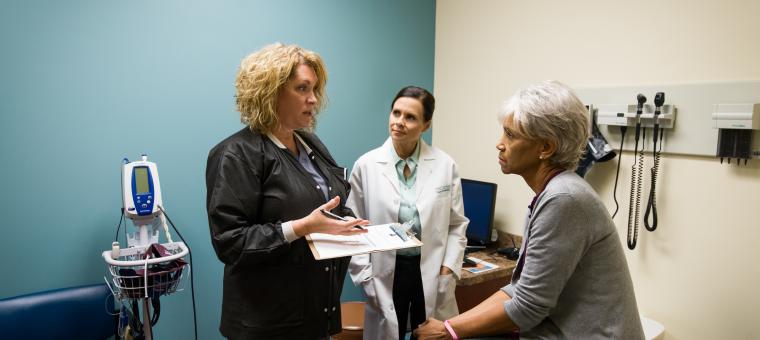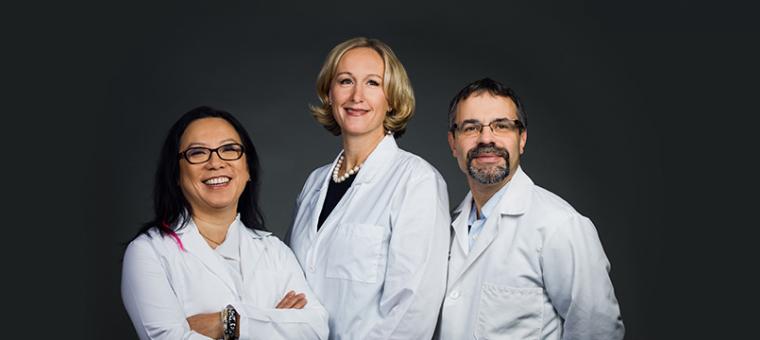« Back to Blog
The Oncology Care Model: Where Are We One Year Later?
July 1 marks the one year anniversary of the Center for Medicare and Medicaid Innovation (CMMI) Oncology Care Model (OCM), a bold new program focused on providing higher quality, more coordinated cancer care for Medicare beneficiaries with attention on managing costs. The program provides upfront payments to fund practice transformation with the expectation that practices will use these funds to provide enhanced services to patients, submit quality metrics and learn from data sharing.
The OCM is a very large, complicated program that calls for a new way of delivering care for the 190 practices who are participating, including 14 in The US Oncology Network (The Network). Some are adjusting well to program requirements, while others struggle to keep up with the multiple rule changes and frequent updates. We have received feedback from participating practices in The Network that the efforts by McKesson Specialty Health have been instrumental in driving practice transformation. They have learned quickly that it would be very difficult to succeed in this government program on their own.
While we will not know how well our practices in The Network are performing in the program until Medicare delivers their first reconciliation reports six months from now, practices have been taking the OCM very seriously and are striving for high performance.
Early Successes
Even though we do not have final data yet from Medicare, some early successes have been identified across The Network:
- A better patient experience
For example, most of our practices have adopted team huddles as a way to identify and help at-risk patients. The huddles have been very successful in helping patients who have needs that might otherwise go unmet.
- Improved care coordination
Practices are more proactive in coordinating care with other entities in the health care environment, such as hospice, urgent care centers, social workers, and other providers.
- Advance care planning for more patients
Advance care planning, an important component of the OCM, is a critical part of quality care often overlooked. Many patients fall through the cracks when it comes to documenting their values and wishes. Good advance care planning helps ensure they receive the care they want during their entire course of treatment.
Major Challenges
While we have identified early successes with the program, we have also encountered some obstacles and a steep learning curve:
- Practice transformation is not easy
Practices have a certain way of doing things, and it is challenging to justify major changes in the clinical work flow. For example, why is there even more clicking (documenting) in the EMR? Do the quality metrics really improve quality of care? Are program demands simply creating more work?
- Identifying patients who should be in the program, particularly those receiving oral drugs only
It is often hard to know which patients meet criteria for enrollment, particularly those on oral medication. Intravenous medications are administered within the walls of the clinic so it is easier to identify and enroll these patients in the OCM. Patients getting oral drugs often have to receive their medications from an outside pharmacy and this is difficult to track. To date, we do not have a good solution to capture patients prescribed oral drugs only. This a problem common to all practices in the program, not just those in The Network.
- Submission of data is challenging
McKesson Specialty Health and The US Oncology Network have developed great tools to help our practices submit their EMR data, but it still requires a lot of work. For practices outside The Network, this is probably their biggest challenge.
- There is uncertainty concerning hiring new staff
CMMI provides $160 per-beneficiary monthly for the delivery of enhanced services, which, in turn, means practices are expected to hire new staff to deliver these enhanced services. Practices are still trying to figure out what type of hires to make, how many people to hire, and how best to optimize performance in these new positions.
Will the OCM Survive?
The OCM, a five-year project, will most likely last for the entire period, but the future beyond the OCM is still uncertain. Practice transformation takes time, so it will be several years before we even know if the model works. If this particular model demonstrates cost savings, something similar could serve as a more permanent method of reimbursement for cancer care. Future models are expected to move even further towards shifting risk to the practices and rewarding those who can manage risk. Whatever happens over the next few years, there will not be a return to full fee-for-service.
A Bridge to the Future
It’s unlikely the elements of the OCM will represent the ultimate method of reimbursement. Rather, it is more likely a stepping stone to future reimbursement models. So, at the least, the OCM is good “practice” to begin learning how to build an infrastructure that drives value and manages risk. McKesson Specialty Health and The US Oncology Network are supporting our practices by working closely with them as they transition to this new way of doing business. Holding boot camps, providing subject matter expertise, and developing innovative resources are a few of the ways we are helping them master this challenging new environment.
While implementing the OCM is difficult, it is important to realize the model is genuinely good for patient care. Patient feedback has been very positive, as patients recognize and appreciate the extra attention they are receiving within this model. It remains to be seen if the 190 practices can take on all the additional requirements, perform well, and be rewarded for doing so. If so, patients and practices will come out ahead.
Marcus Neubauer, MD
VP and Medical Director, Payer and Clinical Services
McKesson Specialty Health and The US Oncology Network

